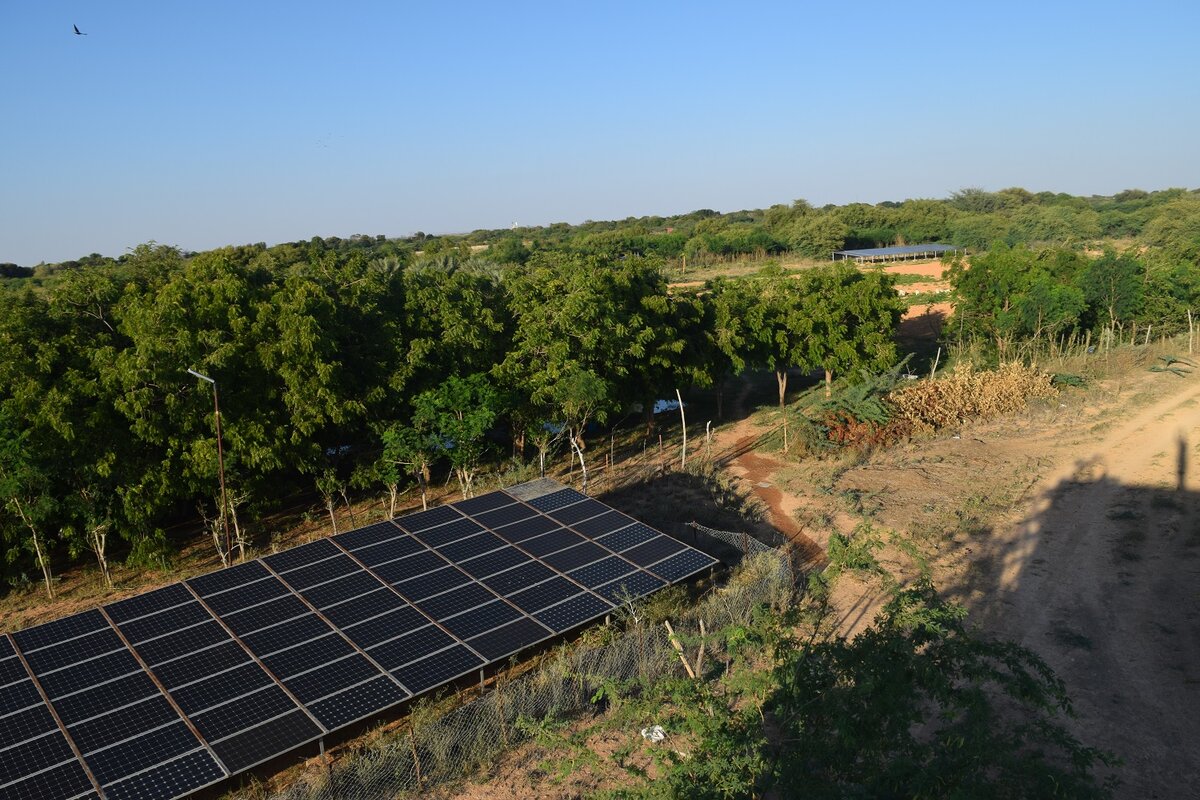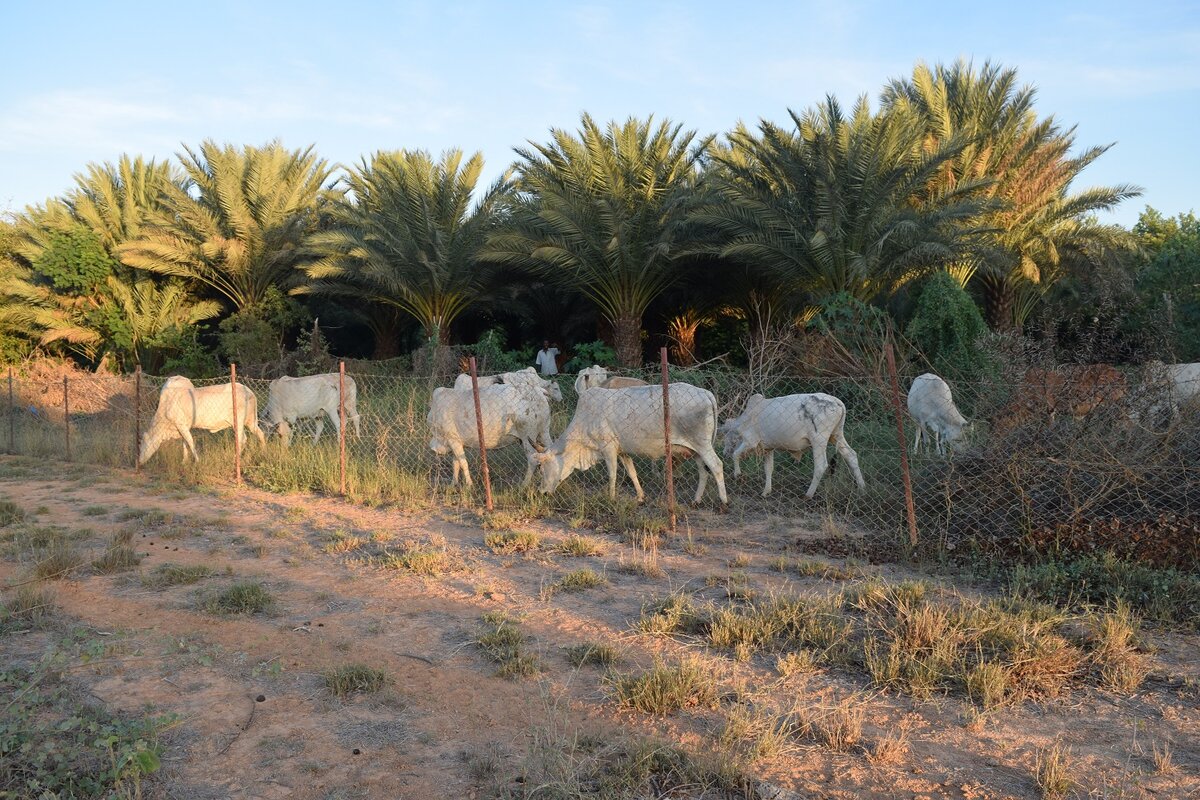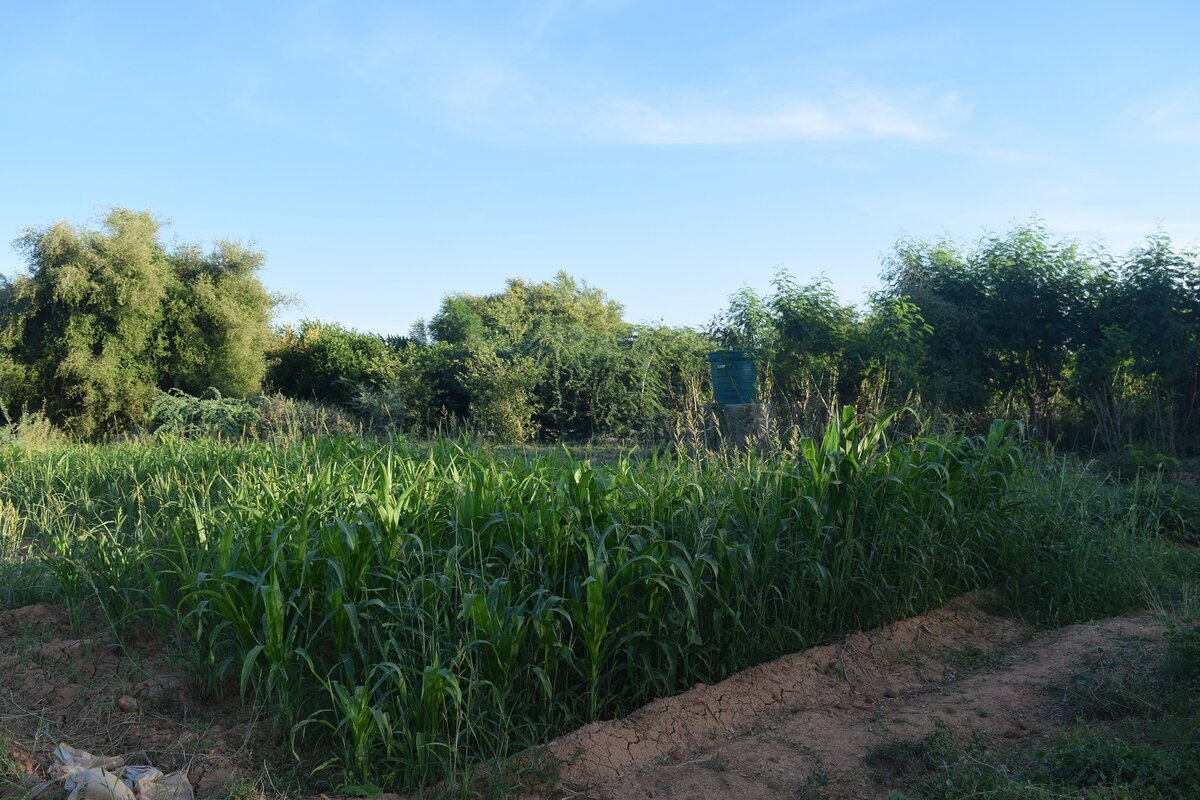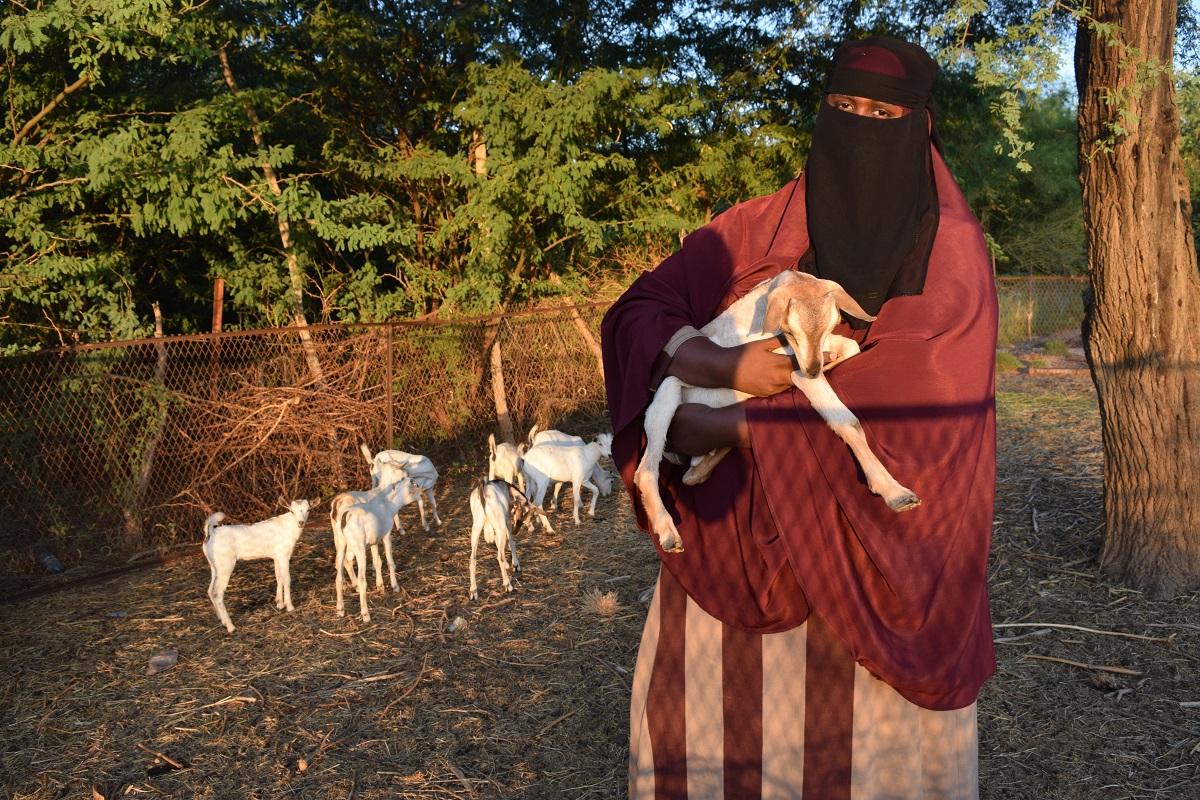You are using an out of date browser. It may not display this or other websites correctly.
You should upgrade or use an alternative browser.
You should upgrade or use an alternative browser.
Garowe Developments
 .
.


“This is a family farm, but since I took over the reins just five years ago, I have transformed it and made it one of the most productive farms in Garowe. I’m getting a great deal of support from my mother who actually was one of the great pillars of the foundations of this farm, where almost 90 percent of its 11 hectares has been effectively utilized for rearing livestock and growing different kinds of fruits and vegetables,” says Ms. Hassan.
“Initially our overhead expenses were too high, and we relied mainly on fuel-powered generators for electricity for our water pumps. Each month we used to pay $5,000 to cover these fuel expenses, but now our fuel expenses have been cut to just $200 – the impact of solar-powered systems is clear to see on our farm. It’s even helped increase the quality and quantity of our production,” says Ms. Hassan.

Ifrah Nur Hassan: Breaking stereotypes in Puntland’s farming sector
Garowe – Pastoralism is a way of life for many Somalis and Puntland, in Somalia’s north, with its semi-arid landscape and warm climate, is a key location for this form of livelihood. But, over the past two decades, there has been some change. Plantations of bananas, mangoes, guavas, lemons...
Mashallah Somalia needs more science not faith in their President
That's the Somalia we like.
One step forward to an auto-sufficient Somalia
One step forward to an auto-sufficient Somalia
Happy to see she keeps local cattle breeds. I really hope Somalia never takes the route of Arabia and basically completely marginalizes our local cattle breeds for western breeds like Holsteins in search of more meat and milk.
This is very sad because genetically meddled with western cows like Holsteins which seem to be becoming popular in the Somali dairy industry due to the profit motive have their set of problems like the A1-betacasein mutation in their milk being allergenic and inflammatory for a lot of people. And just like the now nearly extinct cattle breeds of some parts of Arabia, native Somali cattle breeds are extremely hardy creatures that are well-adapted for the aridity of places like the north and can be pivotal for trying things like regenerative agriculture in the region someday when compared to western breeds that will struggle in all that heat and aridity initially. Somali domesticates in general are a very hardy bunch and can grow like weeds with very little feed and water input which is why many of them like the Somali Sheep are have been picked up all over like in South Africa where they call them "Blackhead Persians".
Plus, our Cushitic ancestors were cattle pastoralists for thousands of years before they touched the camel. Be good to these babies, Somalis. They have struggled with us for thousands of years and are a hardy bunch:

This is very sad because genetically meddled with western cows like Holsteins which seem to be becoming popular in the Somali dairy industry due to the profit motive have their set of problems like the A1-betacasein mutation in their milk being allergenic and inflammatory for a lot of people. And just like the now nearly extinct cattle breeds of some parts of Arabia, native Somali cattle breeds are extremely hardy creatures that are well-adapted for the aridity of places like the north and can be pivotal for trying things like regenerative agriculture in the region someday when compared to western breeds that will struggle in all that heat and aridity initially. Somali domesticates in general are a very hardy bunch and can grow like weeds with very little feed and water input which is why many of them like the Somali Sheep are have been picked up all over like in South Africa where they call them "Blackhead Persians".
Plus, our Cushitic ancestors were cattle pastoralists for thousands of years before they touched the camel. Be good to these babies, Somalis. They have struggled with us for thousands of years and are a hardy bunch:
You don't have permission to view the spoiler content.
Log in or register now.
Last edited:
Do these arid tolerant cows produce a good amount of milk? The ones in the original picture look well fed, they usually look very scrawny when I see them on TV.Happy to see she keeps local cattle breeds. I really hope Somalia never takes the route of Arabia and basically completely marginalizes our local cattle breeds for western breeds like Holsteins in search of more meat and milk.
This is very sad because genetically meddled with western cows like Holsteins which seem to be becoming popular in the Somali dairy industry due to the profit motive have their set of problems like the A1-betacasein mutation in their milk being allergenic and inflammatory for a lot of people. And just like the now nearly extinct cattle breeds of some parts of Arabia, native Somali cattle breeds are extremely hardy creatures that are well-adapted for the aridity of places like the north and can be pivotal for trying things like regenerative agriculture in the region someday when compared to western breeds that will struggle in all that heat and aridity initially. Somali domesticates in general are a very hardy bunch and can grow like weeds with very little feed and water input which is why many of them like the Somali Sheep are have been picked up all over like in South Africa where they call them "Blackhead Persians".
Plus, our Cushitic ancestors were cattle pastoralists for thousands of years before they touched the camel. Be good to these babies, Somalis. They have struggled with us for thousands of years and are a hardy bunch:
You don't have permission to view the spoiler content. Log in or register now.

Do these arid tolerant cows produce a good amount of milk? The ones in the original picture look well fed, they usually look very scrawny when I see them on TV.
Their yield isn't much different from breeds like the Boran of Ethiopia in my experience. Something like 3 to 10 liters or so per day depending on the conditions. Not at all bad and, frankly, one whole family could live quite comfortably off of 1-2 of those cows but Holsteins are on another level where you can see yields of up to 15 to even 30+ liters per day in places like the Khaleej. I don't blame the business folk in Arabia and now slowly Somalia for being courted by them, to be honest. But it's misguided and short-term thinking.
Wouldn’t it be a good idea to start importing these Holsteins instead as it can drastically decrease the starvation rate and can generate revenue. You can’t really be thinking about environmental affects in a country as poor as somaliaTheir yield isn't much different from breeds like the Boran of Ethiopia in my experience. Something like 3 to 10 liters or so per day depending on the conditions. Not at all bad and, frankly, one whole family could live quite comfortably off of 1-2 of those cows but Holsteins are on another level where you can see yields of up to 15 to even 30+ liters per day in places like the Khaleej. I don't blame the business folk in Arabia and now slowly Somalia for being courted by them, to be honest. But it's misguided and short-term thinking.
Wouldn’t it be a good idea to start importing these Holsteins instead as it can drastically decrease the starvation rate and can generate revenue. You can’t really be thinking about environmental affects in a country as poor as somalia
It's about a lot more than having a pleasant environment. These foreign cattle breeds alongside the factory-farming methods they will inevitably come with and more modernized, large-scale plant agriculture will slowly destroy what little topsoil the north has given time and then the north will be dependent on things like artificial fertilizer and imports with no more indigenous food base. Real food security will be compromised completely. This is flatout the situation in the Gulf where anything from 60% or more of both plant and animal based foods come from the outside in places like the UAE. If you shut down the ports and airports in the UAE you'd need only wait about a year until the current reserves are depleted for mass starvation to begin.
The local livestock in Somalia are perfectly capable of feeding the local populace, especially if proper land management is pushed and practiced and more localized farming is encouraged where even the smallest towns and villages are gaining topsoil through regenerative techniques every year and are essentially self-sufficient for things like meat and dairy at the very least. All while maintaining livestock breeds who are more resistant to disease and can handle the local environment well. A system like that can last literally until the sun goes out but the former only lasts as long as the global economic machine does and/or a future Somalia isn't under heavy sanctions or at war.
Last edited:
Are you studying this kind of thing as a profession or is this just common logic? Also southern Somalia is very fertile so would we even be in a ituatioj where food security isn’t guaranteed? Also what’s permanent pasture and what can you do with permanent pasture every time I try looking into agriculture in Somalia I keep coming across that phraseIt's about a lot more than having a pleasant environment. These foreign cattle breeds alongside the factory-farming methods they will inevitably come with and more modernized, large-scale plant agriculture will slowly destroy what little topsoil the north has given time and then the north will be dependent on things like artificial fertilizer and imports with no more indigenous food base. Real food security will be compromised completely. This is flatout the situation in the Gulf where anything from 60% or more of both plant and animal based foods come from the outside in places like the UAE. If you shut down the ports and airports in the UAE you'd need only wait about a year until the current reserves are depleted for mass starvation to begin.
The local livestock in Somalia are perfectly capable of feeding the local populace, especially if proper land management is pushed and practiced and more localized farming is encouraged where even the smallest towns and villages are gaining topsoil through regenerative techniques every year and are essentially self-sufficient for things like meat and dairy at the very least. All while maintaining livestock breeds who are more resistant to disease and can handle the local environment well. A system like that can last literally until the sun goes out but the former only lasts as long as the global economic machine does and/or a future Somalia isn't under heavy sanctions or at war.
NECSOM is also in Waamo

They working In Xamar, Kismayio, EYL and Bossaso.
Dirie foundation opened a plant nursery in Garowe that uses recycled materials as planters, such as tyres, barrels etc.
posted by @HamdaINC and
@SomaliaPdrc







posted by @HamdaINC and
@SomaliaPdrc
“There is none amongst the Muslims who plants a tree or sows seeds, and then a bird, or a person or an animal eats from it, but is regarded as a charitable gift for him.” (Bukhari)
Last edited:
This foundation is brilliant, Puntland has two issues; fighting deforestation and dealing with plastic waste. Two birds, one stone.
Villainess
smooth talk on a rainy summer evening
I don’t even like plants but this makes me happy 
